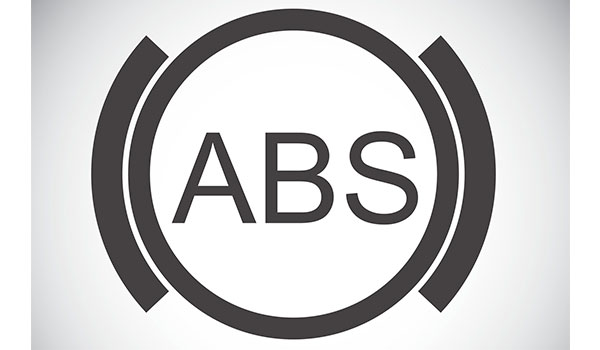Antilock braking systems were first introduced to the aircraft industry and later adopted by Dunlop for automobiles in the late 1950s. However, ABS — as it’s now widely known — has been in mass-production cars since the 1990s. Along with the average vehicle age (11.6 years), many of these systems are getting old.
Modern ABS applies individual brake pressure to all four wheels through hub-mounted sensors and a dedicated computer controller. So what can service department managers do to help customers get their ABS running in tip-top shape again?
The aftermarket doesn’t make hydraulic control units (HCUs), so if a system fails, chances are they will need a major repair and OE replacement parts. But, often the problem stems from corroded brake lines or dirty brake fluid clogging up the system.
The old way of repairing brakes (slapping on a rotor and pads without checking runout) is no longer useful on today’s modern systems. Technicians also can’t splice in a crimp fitting on a brake line that may be pressurized to 2,000 psi through an ABS modulator.
While a crimp fitting might work at first, it probably won’t hold up under a braking event in which the ABS is activated. If the system has dirty brake fluid, it will need to be flushed to keep the valves in the modulator from jamming or not seating.
An ABS scan tool is necessary to bleed the modulator on an ABS-equipped vehicle. Air can get trapped in the valves, and they may need to be opened with a scan tool to bleed the air out of the system.
Vehicles equipped with traction control and other forms of ride stability function off the ABS wheel-speed sensors. Some systems modulate the brakes to control a slipping wheel or slide, so the underlying brake system has to be perfect — or the vehicle might respond in an unintended manner.
Early ABS systems tend to be neglected due to high miles and lack of overall maintenance, so if there’s an ABS light on, it might not get the attention it should. While the system might continue to operate, it won’t function correctly in a panic-stop situation. For example, if there’s too much runout on the brake rotors and wheel hub, an ABS light will be activated.
Typical ABS systems use a tone ring around the wheel hub or back of the brake rotor itself. The sensor needs a specified air gap for the tone ring to operate and convert the signal back to the HCU. Any movement beyond the maximum limit will set off a warning light and deactivate the ABS.
The bottom line is that the base braking system needs to be in proper functioning condition for ABS and other traction-control systems to be effective. To replace corroded lines or crimp fittings, service advisors or managers should recommend new hard lines or flexible lines that can be bent to shape. Some hard lines are sold pre-bent and may need to be cut into pieces to make them fit.
It’s also a good idea to remind customers to flush the brake fluid at the recommended service intervals to keep the system clean. And remember, the fewer junctions and splices, the better it will handle the high pressure from an ABS or traction-control event.














